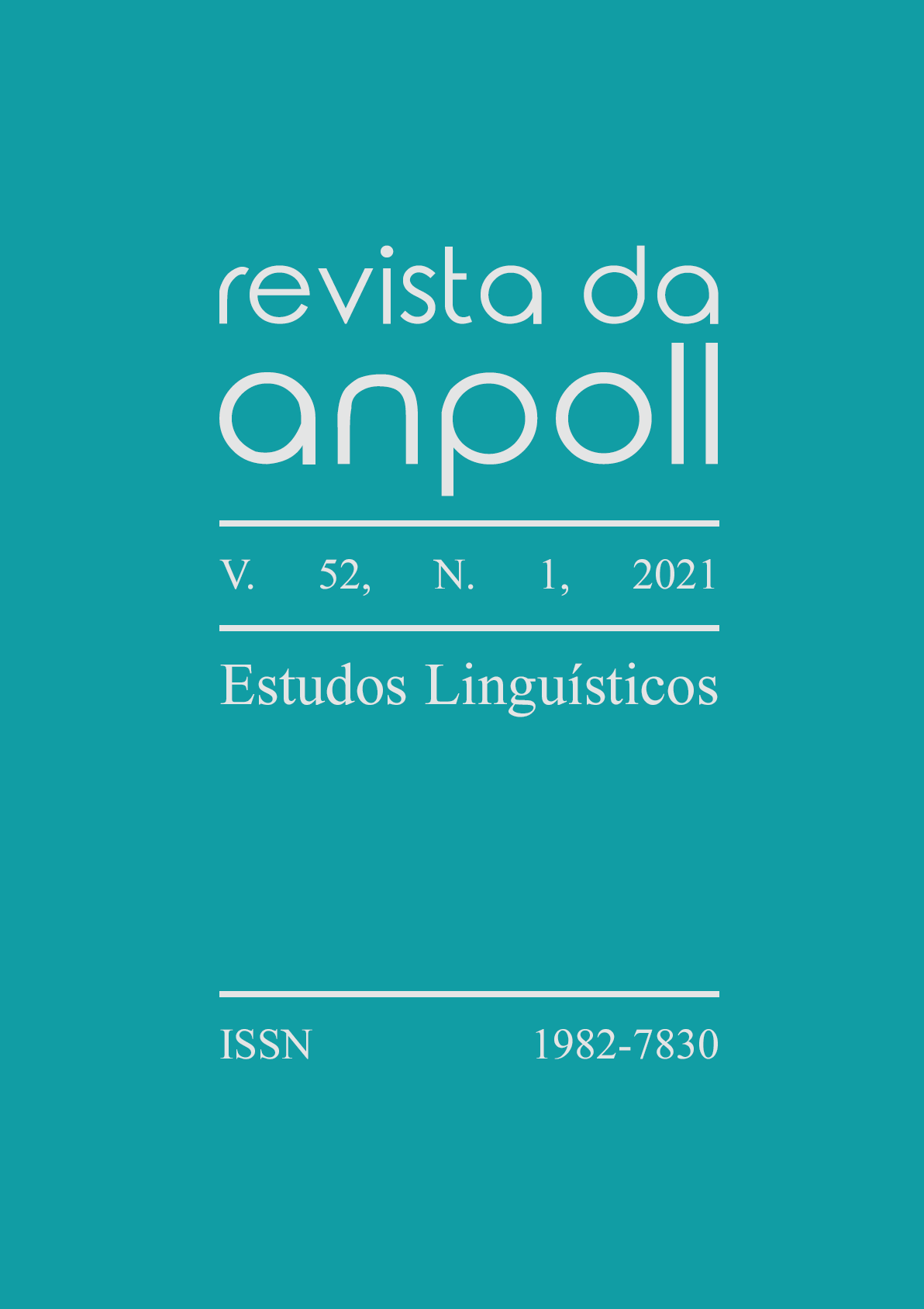Study of exploration paths of a multimedia material designed for reading a poem with augmented reality by Middle School students
DOI:
https://doi.org/10.18309/ranpoll.v52i1.1500Keywords:
Reading, Paths, New Literacies, Poems, Augmented RealityAbstract
The development of digital technologies promotes changes in contemporary social practices. Thus, other reflections are necessary to better understand changes in the ways of acting, interacting and constructing meanings with texts added to electronic-digital supports. This paper presents the paths of exploration, by Middle School students, of a multimedia material for reading a poem with Augmented Reality. The objectives of this paper are: describing the ways in which students handle, interact, and react to the technological resources in the material, as well as how these ways can impact on the construction of meaning. Moreover, it presents a comparison of the path of this material with navigation paths from other hypermedia writings, such as hypertexts. To this end, the main theoretical apparatuses considered are immersive media (cf. AZUMA, 1997, 2016; LIU et al., 2017); hypermedia writings (cf. LEMKE, 2010; SIGNORINI, 2013); new literacies (LANKSHEAR and KNOBEL, 2011); and qualitative research methodology (YIN, 2009). The results point to the use of typical AR interactions by the participants, to increased motivation, and to constructions of meaning that are amplified by the new form of interaction made available by AR.
Downloads
References
AZUMA, R. T. A Survey of Augmented Reality. Presence: Teleoperators and Virtual Environments, 1997. p. 355-385.
AZUMA, R. T. Making Augmented Reality a Reality. Presence, v. 25, n. 3, 2017. p. 234-238.
Chartier, R. A aventura do livro: do leitor ao navegador. São Paulo: Editora Unesp, 1999.
BOWER, M.; HOWE, C.; McCREDIE, N.; ROBISON, A. GROVER, D. Augmented Reality in education – cases places and potential. Educational Media International, v. 51, n. 1, 2014. p. 1-15.
DEDE, C; JACOBSON, J.; RICHARDS, J. Introduction: Virtual, Augmented, and Mixed Realities in Education. In: LIU, D.; DEDE, C.; HUANG, J.; RICHARDS, J. (orgs). Virtual, Augmented, and Mixed Realities in Education, 2017. (Smart Computing and intelligence).
GEBARA, A. E, L. A poesia na escola. São Paulo: Cortez. 2002. (Coleção aprender e ensinar com textos, v. 10).
GEE, J. P. Situated Language and Learning: A Critique of Traditional Schooling. London: Routledge, 2004.
GUIMARÃES, R. F. R. Estudo da incorporação da Realidade aumentada na leitura de poema em duas turmas no ciclo inicial do Ensino Fundamental II. 2019.161 f. Dissertação (Mestrado em Linguística Aplicada na área de Linguagem e Educação) - Instituto de Estudos da Linguagem, Universidade Estadual de Campinas, Campinas.
LANGLADE, G. O sujeito leitor, autor da singularidade da obra. In: ROUXEL, A.; LANGLADE, G.; REZENDE, N. (orgs.). Leitura subjetiva e ensino de literatura. São Paulo: Alameda, 2013. p. 25-38.
LANKSHEAR, C., KNOBEL, M. New Literacies: everyday practices and social learning. McGraw-Hill Education, Open University Press, Third Edition, 2011.
LEMKE, J. L. Letramento metamidiático: transformando significado e mídias. Tradução de Clara Dornelles. Trabalhos em Linguística Aplicada, Campinas/SP, v. 49, n. 2, p. 455-479, 2010.
LIU, D.; DEDE, C.; HUANG, J.; RICHARDS, J. Virtual, Augmented, and Mixed Realities in Education, 2017. (Smart Computing and intelligence).
The NMC/CoSN Horizon Report: 2017 K–12. Disponível em: https://files.eric.ed.gov/fulltext/ED588803.pdf. Acesso em março de 2021.
SIGNORINI, I. Bordas e Fronteiras entre escritas grafocêntricas e hipermidiáticas. In: MOITA LOPES, L. P (org). Linguística Aplicada na Modernidade Recente. São Paulo: Parábola, 2013. p. 197-209.
SIRAKAYA, M.; ALSANCAK SIRAKAYA, D. Trends in Educational Augmented Reality Studies: A Systematic Review. Malaysian Online Journal of Educational Technology, v. 6, n. 2, p. 60-74, 2018. DOI: https://doi.org/10.17220/mojet.2018.02.005
SORRENTI, N. A poesia vai à escola - Reflexões, comentários e dicas de atividades. 2. ed. São Paulo: Autêntica, 2013. (Coleção Formação Humana na Escola, 6).
YIN, Robert K. Case Study Research: design and methods. 4. ed. USA: SAGE, 2009. (Applied Social Research methods series, 5).
Downloads
Published
How to Cite
Issue
Section
License
Copyright (c) 2021 Revista da Anpoll

This work is licensed under a Creative Commons Attribution 4.0 International License.
Os trabalhos publicados na Revista da Anpoll são licenciados sob os termos da licença Creative Commons Atribuição 4.0 Internacional. Assim, os/as autores/as ou terceiros podem copiar e redistribuir o material licenciado em qualquer suporte ou formato, e remixar, transformar, ou criar a partir do material desde que sejam dados os devidos créditos ao trabalho original. Ressalta-se que a redistribuição, transformação ou criação, de iniciativa de dos/as autores/as ou de terceiros, deve mencionar a precedência de sua publicação neste periódico, citando-se o volume, número e data desta publicação.






